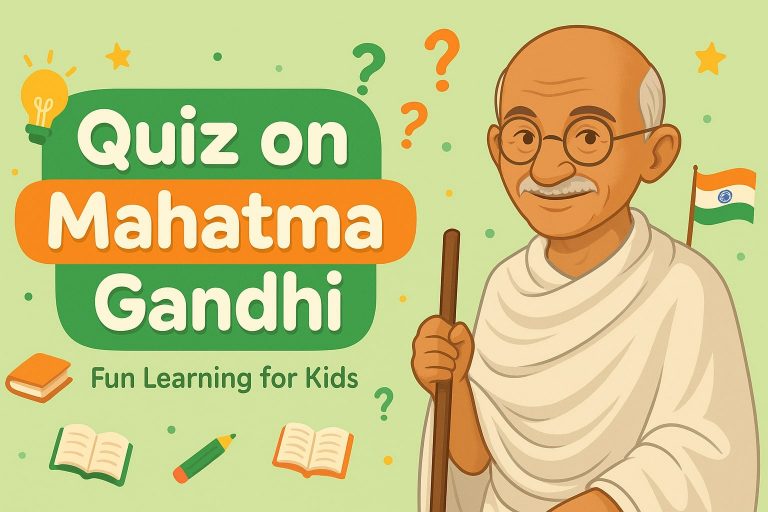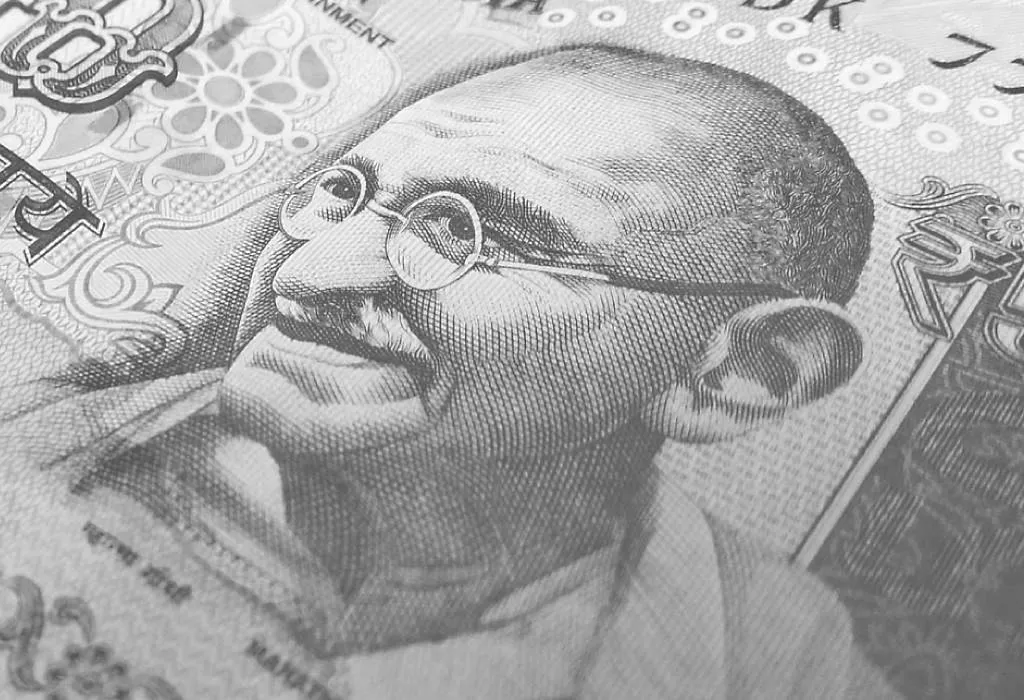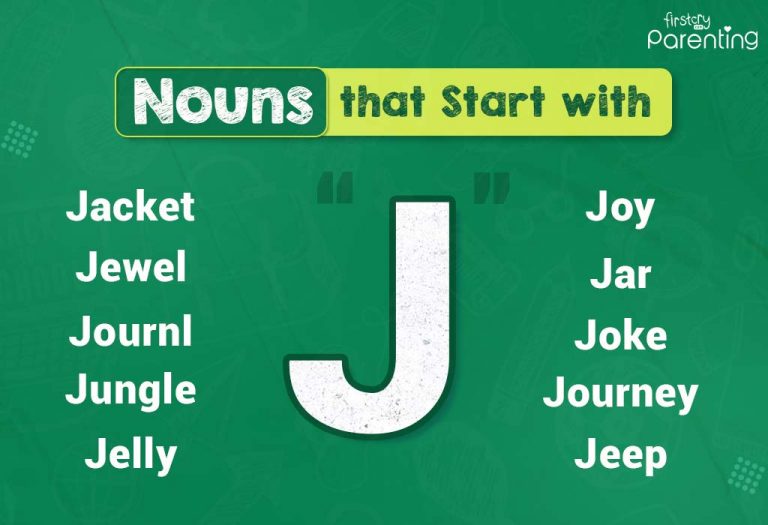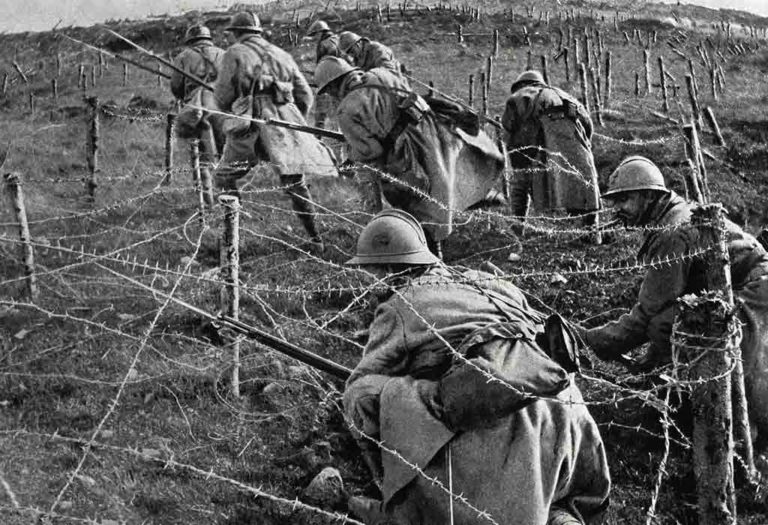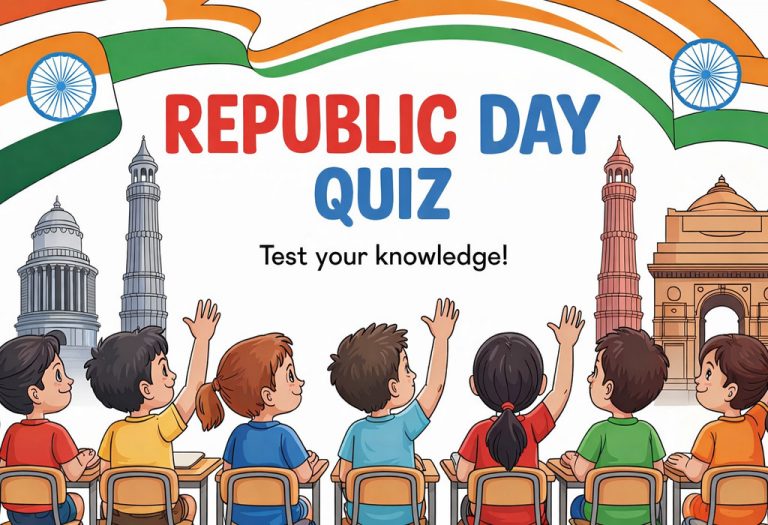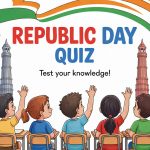Quiz on Mahatma Gandhi – Question and Answers About Gandhiji
Mahatma Gandhi, revered as the Father of the Nation, played an indispensable role in India’s struggle for independence, inspiring millions with his principles of non-violence and civil disobedience. As responsible citizens of a free India, it is imperative that we acquaint our children with his extraordinary life and the sacrifices he made to secure our freedom from British colonial rule. This October 2nd, consider organizing a Mahatma Gandhi quiz at home for your kids. Utilize this insightful quiz on Mahatma Gandhi for kids on his life and legacy, providing an engaging opportunity for learning and reflection. Let’s celebrate his enduring spirit and ideals through fun and educational Gandhi quiz questions and answers!
Quiz Questions On Mahatma Gandhi With Answers
Here are some engaging quiz questions on Mahatma Gandhi, designed to test your knowledge of the life and legacy of the Father of the Nation.
1. Who called Gandhiji ‘Mahatma’?
a) Jawaharlal Nehru
b) Rabindranath Tagore
c) Subhash Chandra Bose
d) Sardar Vallabhbhai Patel
Answer: b
Explanation:
Rabindranath Tagore called Gandhiji ‘Mahatma’. The term “Mahatma” means “great soul” in Sanskrit, reflecting Tagore’s admiration and respect for Gandhi’s spiritual and moral stature.
2. Who is considered as the spiritual guru of Gandhiji?
a) Leo Tolstoy
b) Swami Vivekananda
c) Ramakrishna Paramahamsa
d) Paramahansa Yogananda
Answer: a
Explanation:
Leo Tolstoy is considered the spiritual guru of Gandhiji. Gandhi corresponded with Tolstoy and was deeply influenced by his ideas on non-violence and simple living.
3. Where was Mahatma Gandhi born?
a) Delhi, India
b) Mumbai, India
c) Porbandar, India
d) Kolkata, India
Answer: c
Explanation:
Mahatma Gandhi was born in Porbandar, India. It is a coastal city in Gujarat, known for its association with Gandhi and also as the birthplace of Sudama, a friend of Lord Krishna.
4. What is Mahatma Gandhi’s first name?
a) Raghuram
b) Karamchand
c) Mohandas
d) Harilal
Answer: c
Explanation:
Mahatma Gandhi’s first name is Mohandas. He is commonly referred to as Mahatma Gandhi, with “Mahatma” being an honorific title meaning “great soul.”
5. What is the name of Mahatma Gandhi’s parents?
a) Ramdas and Anandibai Gandhi
b) Karamchand and Putlibai Gandhi
c) Devdas and Saraswati Gandhi
d) Vishnu and Lakshmi Gandhi
Answer: b
Explanation:
Mahatma Gandhi’s parents were Karamchand Gandhi and Putlibai Gandhi. They had a significant influence on his upbringing and values.
6. What did Gandhiji call freedom fighter Subhash Chandra Bose?
a) Patriot
b) Comrade
c) Netaji
d) Leader
Answer: c
Explanation:
Gandhiji called Subhash Chandra Bose “Netaji.” This title was given to Bose as a sign of respect and leadership within the Indian National Congress.
7. What is the significance of the Gandhi Memorial in Kanyakumari?
a) It is where Gandhiji was born.
b) Gandhiji’s ashes were kept here before immersion in the sea on February 12, 1948.
c) It is where Gandhiji was assassinated.
d) It is where Gandhiji practiced law.
Answer: b
Explanation:
The significance of the Gandhi Memorial in Kanyakumari is that Gandhiji’s ashes were kept there before immersion in the sea on February 12, 1948. This memorial serves as a tribute to his life and teachings.
8. When was the Mahatma Gandhi Series of banknotes issued by the Reserve Bank of India?
a) 1947
b) 1956
c) 1978
d) 1996
Answer: d
Explanation:
The Mahatma Gandhi Series of banknotes was issued by the Reserve Bank of India in 1996 to honor the legacy of Mahatma Gandhi and reflect India’s cultural heritage.
9. Who is the author of Gandhiji’s favourite Bhajan ‘Vaishnava jana to tene kahiye’?
a) Rabindranath Tagore
b) Mirabai
c) Narsi Mehta
d) Tulsidas
Answer: c
Explanation:
Narsi Mehta is the author of Gandhiji’s favorite Bhajan ‘Vaishnava jana to tene kahiye’. The bhajan speaks about the ideals of a Vaishnava Jana or a follower of Lord Vishnu.
10. What was the civil disobedience movement where the British were asked to leave India called?
a) Quit India Movement
b) Non-Cooperation Movement
c) Khilafat Movement
d) Bardoli Satyagraha
Answer: a
Explanation:
The movement where the British were asked to leave India was called the Quit India Movement. It was launched by Mahatma Gandhi in 1942, demanding an end to British rule in India.
11. Who led the Salt Satyagraha Movement with Gandhi?
a) Sarojini Naidu
b) Jawaharlal Nehru
c) Subhash Chandra Bose
d) Vallabhbhai Patel
Answer: a
Explanation:
Sarojini Naidu was a prominent leader who actively participated in the Salt Satyagraha Movement alongside Mahatma Gandhi, mobilizing people and advocating for the cause of Indian independence.
12. How is the date of Mahatma Gandhi’s return to India in 1915 observed now?
a) Pravasi Bharatiya Divas
b) Independence Day
c) Republic Day
d) Gandhi Jayanti
Answer: a
Explanation:
The date of Mahatma Gandhi’s return to India in 1915 is observed as Pravasi Bharatiya Divas, commemorating the contributions of overseas Indians towards the development of India.
13. When is the International Day of Non-Violence celebrated?
a) January 30
b) August 15
c) October 2
d) November 14
Answer: c
Explanation:
The International Day of Non-Violence is celebrated on October 2nd, coinciding with Mahatma Gandhi’s birthday, to promote the principles of non-violence and commemorate his legacy.
14. Where is Sabarmati Ashram?
a) Delhi
b) Mumbai
c) Ahmedabad
d) Kolkata
Answer: c
Explanation:
Sabarmati Ashram is located in Ahmedabad, Gujarat. It was established by Mahatma Gandhi in 1917 and served as a focal point for the Indian independence movement, promoting principles of truth, non-violence, and self-reliance.
15. By which name is Gandhi lovingly called by his countrymen?
a) Mahapurush
b) Mahatma
c) Bapu
d) Babu
Answer: c
Explanation:
Gandhi is lovingly called “Bapu” by his countrymen. It is a term of endearment in Gujarati, meaning “father” or “papa,” reflecting the deep respect and affection people had for him.
16. What was Gandhiji’s age when he went to London to become a barrister?
a) 17 years old
b) 19 years old
c) 21 years old
d) 23 years old
Answer: b
Explanation:
Gandhiji was 19 years old when he went to London to study law and become a barrister. His experiences in London played a significant role in shaping his later philosophy and activism.
17. What title did Mahatma Gandhi give to his autobiography?
a) The Autobiography of a Yogi
b) My Experiments with Truth
c) The Story of My Life
d) Freedom Fighter
Answer: b
Explanation:
Mahatma Gandhi gave the title “My Experiments with Truth” to his autobiography, reflecting his lifelong pursuit of truth and his spiritual and philosophical journey.
18. In which prison was Gandhi mostly imprisoned during his struggles against the British?
a) Alipore Jail
b) Tihar Jail
c) Yerwada Jail
d) Cellular Jail
Answer: c
Explanation:
Gandhi was mostly imprisoned in Yerwada Jail in Pune during his struggles against the British. He spent several years in prison for his civil disobedience and non-cooperation movements.
19. Which major non-violent protest was launched by Gandhiji in 1930?
a) Quit India Movement
b) Civil Disobedience Movement
c) Non-Cooperation Movement
d) Dandi March or Salt March
Answer: d
Explanation:
The major non-violent protest launched by Gandhiji in 1930 was the Dandi March, also known as the Salt March, which protested against the British salt tax and sparked widespread civil disobedience across India.
20. Which political leader often disagreed with Gandhi but described him as the “Saint of Sabarmati”?
a) Jawaharlal Nehru
b) Subhash Chandra Bose
c) Vallabhbhai Patel
d) Dr. B.R. Ambedkar
Answer: a
Explanation:
Jawaharlal Nehru often disagreed with Gandhi on various political matters but still described him as the “Saint of Sabarmati,” acknowledging his moral and spiritual leadership.
21. How many times was Mahatma Gandhi nominated for the Nobel Peace Prize?
a) Two times
b) Three times
c) Four times
d) Five times
Answer: d
Explanation:
Mahatma Gandhi was nominated for the Nobel Peace Prize five times in 1937, 1938, 1939, 1947, and 1948, but he never won the prize despite his significant contributions to peace and non-violence.
22. Which British officer was assassinated by Gandhiji’s supporter, leading to Gandhi fasting as an act of atonement?
a) Sir Michael O’Dwyer
b) Reginald Dyer
c) Lord Mountbatten
d) James A. Dyer
Answer: d
Explanation:
Mahatma Gandhi’s supporter assassinated James A. Dyer, the British officer responsible for the Jallianwala Bagh massacre, leading Gandhi to fast as an act of atonement for the violence.
23. Who played the role of Mahatma Gandhi in the 1982 movie ‘Gandhi’?
a) Ben Kingsley
b) Anthony Hopkins
c) Richard Attenborough
d) Morgan Freeman
Answer: a
Explanation:
Ben Kingsley portrayed the role of Mahatma Gandhi in the 1982 movie ‘Gandhi,’ directed by Richard Attenborough. Kingsley’s performance was critically acclaimed and won him an Academy Award for Best Actor.
24. What was the first Satyagraha movement initiated by Gandhi?
a) Dandi March or Salt March
b) Champaran Satyagraha
c) Kheda Satyagraha
d) Ahmedabad Mill Workers Strike
Answer: b
Explanation:
The first Satyagraha movement initiated by Gandhi was the Champaran Satyagraha in Bihar in 1917, where he protested against the exploitation of indigo farmers by British landlords.
25. In which year did Gandhiji initiate the Non-Cooperation Movement?
a) 1919
b) 1920
c) 1921
d) 1922
Answer: b
Explanation:
Gandhiji initiated the Non-Cooperation Movement in 1920, calling for Indians to boycott British goods, institutions, and services as a non-violent protest against British colonial rule.
26. Which principle, meaning “non-violence,” was a cornerstone of Gandhiji’s philosophy?
a) Satyagraha
b) Swadeshi
c) Ahimsa
d) Sarvodaya
Answer: c
Explanation:
Ahimsa, meaning “non-violence” or “non-harming,” was a cornerstone of Gandhiji’s philosophy and approach to social and political change, advocating for the resolution of conflicts through peaceful means and respect for all life.
27. What was the name of the organization founded by Gandhi in South Africa to advocate for Indian rights?
a) Indian National Congress
b) Natal Indian Congress
c) Indian Independence League
d) Indian Home Rule Movement
Answer: b
Explanation:
The Natal Indian Congress was founded by Gandhi in South Africa in 1894 to fight discrimination against Indian immigrants.
28. Which event marked the beginning of Mahatma Gandhi’s activism in India?
a) Champaran Satyagraha
b) Non-Cooperation Movement
c) Salt Satyagraha
d) Khilafat Movement
Answer: c
Explanation:
Mahatma Gandhi’s first major activism in India was marked by the Salt Satyagraha or the Dandi March in 1930, which protested the salt tax imposed by the British.
29. What was the name of the agreement signed between Mahatma Gandhi and Lord Irwin in 1931, securing the release of political prisoners?
a) Gandhi-Irwin Pact
b) Poona Pact
c) Lucknow Pact
d) Delhi Pact
Answer: a
Explanation:
The Gandhi-Irwin Pact, also known as the Delhi Pact, was signed between Mahatma Gandhi and Lord Irwin in 1931, securing the release of political prisoners and allowing for participation in the Round Table Conferences.
30. Which British viceroy was in power when Mahatma Gandhi launched the Quit India Movement?
a) Lord Curzon
b) Lord Mountbatten
c) Lord Wavell
d) Lord Linlithgow
Answer: d
Explanation:
Lord Linlithgow was the Viceroy of India when Mahatma Gandhi launched the Quit India Movement in 1942, demanding an end to British rule.
31. Which incident led to the formation of the Non-Cooperation Movement in 1920?
a) Jallianwala Bagh Massacre
b) Champaran Satyagraha
c) Chauri Chaura incident
d) Khilafat Movement
Answer: c
Explanation:
The Chauri Chaura incident, where protesters clashed with police resulting in violence, led Mahatma Gandhi to call off the Non-Cooperation Movement in 1922.
32. What was the name of the newspaper edited by Mahatma Gandhi during his South African struggle?
a) Indian Opinion
b) Young India
c) Harijan
d) Navajivan
Answer: a
Explanation:
Indian Opinion was the newspaper founded and edited by Mahatma Gandhi during his time in South Africa, which served as a platform for his views on civil rights.
33. What was the name of the ashram founded by Mahatma Gandhi in South Africa?
a) Phoenix Settlement
b) Tolstoy Farm
c) Sevagram Ashram
d) Sabarmati Ashram
Answer: a
Explanation:
Phoenix Settlement was the ashram established by Mahatma Gandhi near Durban in South Africa, where he practiced his principles of simple living and self-sufficiency.
34. In which year did Mahatma Gandhi famously lead the Salt March?
a) 1928
b) 1930
c) 1932
d) 1934
Answer: b
Explanation:
Mahatma Gandhi led the Salt March in 1930 as a protest against the salt tax imposed by the British, which became a significant event in the Indian independence movement.
35. Which of the following movements was not led by Mahatma Gandhi?
a) Quit India Movement
b) Khilafat Movement
c) Civil Disobedience Movement
d) Swadeshi Movement
Answer: b
Explanation:
The Khilafat Movement was led by Muslim leaders, primarily Ali brothers, seeking to preserve the Ottoman Caliphate. While Gandhi supported it, he did not lead it.
36. What was the original name of the Salt Satyagraha?
a) Dandi March
b) Bardoli Satyagraha
c) Champaran Satyagraha
d) Non-Cooperation Movement
Answer: a
Explanation:
The Salt Satyagraha is also known as the Dandi March because it started at Sabarmati Ashram and ended at Dandi Beach, where Gandhi and his followers made salt from seawater.
FAQs
1. What is the significance of Mahatma Gandhi’s concept of ‘Satyagraha’?
Mahatma Gandhi’s concept of ‘Satyagraha’ holds immense significance as a method of nonviolent resistance and civil disobedience. It emphasizes the power of truth and moral force to confront injustice and oppression. ‘Satyagraha’ promotes peaceful protest and seeks to transform adversaries through empathy and understanding rather than confrontation or violence.
2. What role did Mahatma Gandhi play in the Indian National Congress?
Mahatma Gandhi played a pivotal role in shaping the Indian National Congress (INC) into a mass movement for independence from British rule. He provided dynamic leadership, advocating for nonviolent resistance, civil disobedience, and Swaraj (self-governance). Gandhi’s principles of nonviolence and Satyagraha mobilized millions of Indians to participate in the freedom struggle, making the INC a formidable force against colonialism.
3. How can I prepare for a Mahatma Gandhi quiz?
To prepare for a Mahatma Gandhi quiz, start by studying key aspects of his life, such as his early years, education, experiences in South Africa, leadership in the Indian independence movement, and principles of nonviolence. Familiarize yourself with significant events, speeches, writings, and contributions of Gandhi. Utilize books, documentaries, online resources, and quiz questions to reinforce your understanding. Practice recalling information and discussing Gandhi’s legacy with others to deepen your knowledge.
I hope this set of Gandhiji quiz questions complements your list well!
Take a trip down India’s history with these general knowledge questions on Mahatma Gandhi. What’s more, this Gandhi Jayanti quiz can be fun not just for kids but also the adults. Just add some fun buzzers and cool gifts at the end!
Also Read:
Mahatma Gandhi Information and Facts for Kids
Gandhi Jayanti Speech for Children and Students
Kid-Friendly Movies on Mahatma Gandhi’s Life
History and Celebration of Mahatma Gandhi Jayanti
Famous Mahatma Gandhi Slogans In English to Remember
Was This Article Helpful?
Parenting is a huge responsibility, for you as a caregiver, but also for us as a parenting content platform. We understand that and take our responsibility of creating credible content seriously. FirstCry Parenting articles are written and published only after extensive research using factually sound references to deliver quality content that is accurate, validated by experts, and completely reliable. To understand how we go about creating content that is credible, read our editorial policy here.





